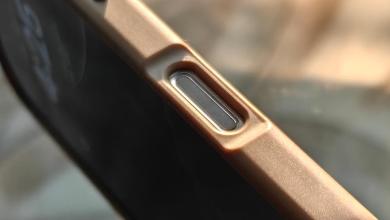Best TVs of 2025: Tested by CNET Experts
Most people looking for a new TV are focused on picture quality for the money, in a size that’s right for their room. Here at CNET I test TVs head-to-head in our dedicated lab and I want to help you choose the best television for your needs. Whether you care most about gaming, sports or streaming TV shows and movies, in a living room or bedroom, there’s a model here for you. Although new televisions are coming out in spring 2025, some of the recommendations below debuted last year. That’s because TVs are a pretty stable technology and year-to-year improvements are usually minor. Here are the best TV you can buy now, from high-end QLED and OLED to midrange mini-LED to cheap 4K smart TVs.
Samsung DU7200
In terms of the best bang-for-buck, one of the most impressive models has been the Samsung DU7200 — it’s a TV that delivers a really good picture for an affordable price. The black levels and shadow detail are excellent for the money and while my test unit looked a little desaturated out of the box that was easily fixed by adjusting the Color control. The TV has onboard streaming and the sound quality isn’t too bad either. If you’re looking for a bedroom unit or a smaller gaming TV then the Samsung DU7200 is the model I would choose. Don’t buy it if you’re a stickler for image quality but for the price it’s pretty great.
Ty Pendlebury/CNET
Other TVs I’ve tested
The Konica Minolta CS-2000 spectroradiometer testing an LG OLED in CNET’s lab.
LG C3: When David Katzmaier reviewed the C3 in 2023 it was one of his favorite TVs and this impression continued into the following year. It’s still a great TV but with the pricing on this and the C4 similar right now it makes sense to go for the newer TV. Read CNET’s full review of the LG C3.
Panasonic Z95A: The Panasonic Z95A is an excellent TV and it has one advantage over most at the price because of its dedicated speaker system, giving it decent sound quality. The inclusion of Amazon Fire TV is also unusual for the price but I still prefer Google TV. Read CNET’s hands-on of the Panasonic Z95A.
Samsung S90D: The S90D performed well in our measurement tests but it suffered some contrast loss compared to the C4. Any differences between the C4 and S90D were subtle. Read CNET’s full review of the Samsung S90D.
How CNET tests TVs
CNET editors David Katzmaier and Ty Pendlebury have been testing TVs since the turn of the century.
In every CNET TV review, I compare three or more similar TVs side by side in a dedicated, light-controlled test lab. With each review I employ a rigorous, unbiased evaluation process that has been honed in more than two decades of TV reviews. I test TVs with a combination of scientific measurements and real-world evaluations of TV, movies and gaming content.
To ensure I can evaluate the picture quality of every TV I employ the use of an AVPro Connect 8×8 4K HDR splitter so each one receives the same signal. I test the TVs using various lighting conditions playing different media, including 4K HDR movies and console games, across a variety of test categories, from color to video processing to gaming to HDR.
In order to measure each TV, I use specialized equipment to grade according to light output and color. My hardware includes a Konica Minolta CS-2000 spectroradiometer and a Murideo Six-G 4K HDR signal generator. I use Portrait Displays CalMan Ultimate software to evaluate every TV I review according to their brightness, black levels and color.
My reviews also account for such things as features, design, smart TV performance, connectivity including HDMI inputs and gaming compatibility.
Check out How CNET Tests TVs for more details.
Factors to consider when choosing a TV
The Sony Bravia 8 II is a new flagship OLED
With all of the TVs available today, and all of the technical terms and jargon associated with television technology, it can be tough to figure out what’s important. Here’s a quick guide to help cut through the confusion.
Picture quality: Broadly speaking, the type of display technology helps dictate how good a TV’s picture quality is, but OLED is typically the best display technology, and this is followed by LCD (including QLED, and Mini LED). OLED tends to have the best picture quality because it doesn’t need a backlight and every pixel can be either on or off, leading to great black levels. In comparison, each LED in a backlight looks after multiple pixels at a time so it isn’t as precise — it’s not yet 1:1. Among midrange models, look for a feature including full-array local dimming, mini-LED and 120Hz refresh rate, which (unlike some other extras) do help improve the picture in my experience. Additionally, If a TV uses Quantum Dots it often leads to better color performance, whether it’s an OLED or an LCD.
Screen size: Bigger is better in my book. I recommend a size of at least 43 inches for a bedroom TV and at least 55 inches for a living room or main TV — and 65 inches or larger is best. More so than any “feature,” stepping up in TV screen size is the best use of your money. One of the most common post-TV-purchase complaints I’ve heard is from people who didn’t go big enough. And I rarely hear people complain that their TV is too large. It’s worth adding that while TVs can get really big indeed, 4K resolution is sufficient for even the biggest models, and CNET doesn’t recommend any 8K TVs as they represent a poor comparative value.
Price: TVs range in price from $100 to more than $2,000. Smaller screens are cheaper, well-known brands are more expensive and spending more money can also get you better image quality. Most entry-level TVs have a good enough picture for most people, but TVs last a long time, so it might be worth spending more to get a better picture. It’s also best to shop for a TV in the fall when prices are lower.
Sound quality: Every TV has some sort of built-in speaker, but in my twenty years of reviewing AV equipment the sound of modern TVs has been routinely terrible. While I do test the audio on each model, if you are serious about sound quality then buying a separate soundbar (from $100) or home theater system will instantly improve vital aspects such as speech and bass reproduction.
Smart TV: Among entry-level TVs the most important feature is what kind of smart TV system the TV uses, and while some are proprietary to each brand (Samsung and LG) some models do offer Roku and Google TV.
For more TV buying advice check out How to Buy a TV.
TV brightness according to CNET’s testing
One important aspect of image quality I test is overall brightness using the CS-2000 spectroradiometer. Here’s how brightness compares in nits across select TVs listed above.
Questions to Ask When Buying a New TV
How much should I spend on a TV?
Prices vary widely by size and features, from less than $100 for basic 24-inch TVs to more than $2,000 for big OLED models. TVs last a long time, so we think it’s worthwhile to spend a little extra beyond the bare minimum to get a bigger screen, better picture quality or better features. With that in mind, here are some ballpark prices that will get you a very good TV in 2025.
You could pay (much) more or less. The fact is just about any TV will produce a picture decent enough to satisfy most viewers. Most complaints you read in user reviews aren’t about picture quality. Instead, they’re about ease of use, smart TV menus or sound (or a broken TV).
What size TV should I buy?
In our opinion bigger is better, and your money is best spent on large screen sizes rather than a slight upgrade in image quality. The answer also depends on room size and seating distance: If you have a big room and sit farther away, you’ll want a bigger TV.
Which is better, OLED or LED?
In our reviews, OLED TVs, which use organic light-emitting diode technology, have always had better picture quality than LED TVs, which are essentially LCD TVs that use LED backlights. The main reason is that OLED TVs can produce a perfectly dark shade of black with no stray illumination of blooming, which leads to better contrast and pop. LED TVs can get brighter, and usually cost less than OLED TVs.
What is the best smart TV system for streaming?
At CNET our favorite is Roku for its simplicity, but different systems like Google TV, Amazon Fire TV, Samsung and LG have different strengths, in particular for voice commands. In any case, we don’t consider the built-in smart TV system that important because you can always connect a streaming device to any TV.
How do I get the best TV sound?
Most TVs sound terrible because their thin cabinets don’t have room for decent-sized speakers or a bass. If you want to get good sound you should buy an external audio system. Even an inexpensive soundbar will deliver much better audio quality than a TV’s built-in speakers.
Source link

